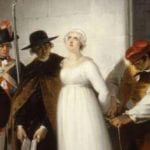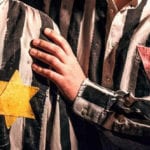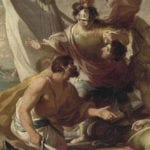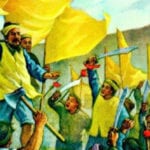 Crime
Crime  Crime
Crime  History
History 10 Facts about the Last Man to Be Hanged for Treason in the UK
 Movies and TV
Movies and TV 10 Actors Who Returned to Roles after a Long Absence
 Animals
Animals 10 Clever Creatures That Don’t Have a Brain
 Crime
Crime 10 Evil Pastors Who Killed Their Family
 Politics
Politics 10 Politicians Who Beat a Future President
 Sport
Sport 10 Wild Facts about the Crazy First Years of the Tour de France
 Movies and TV
Movies and TV 10 Great Songs by Fictional Musicians in Movies
 Animals
Animals Ten Astonishing Stories about Underwater Life
 Weird Stuff
Weird Stuff 10 Strange and Unexpected Things Smuggled into Strict Authoritarian Countries
 Crime
Crime 10 Startling Cases of Jurors’ Mischief
 History
History 10 Facts about the Last Man to Be Hanged for Treason in the UK
 Movies and TV
Movies and TV 10 Actors Who Returned to Roles after a Long Absence
Who's Behind Listverse?

Jamie Frater
Head Editor
Jamie founded Listverse due to an insatiable desire to share fascinating, obscure, and bizarre facts. He has been a guest speaker on numerous national radio and television stations and is a five time published author.
More About Us Animals
Animals 10 Clever Creatures That Don’t Have a Brain
 Crime
Crime 10 Evil Pastors Who Killed Their Family
 Politics
Politics 10 Politicians Who Beat a Future President
 Sport
Sport 10 Wild Facts about the Crazy First Years of the Tour de France
 Movies and TV
Movies and TV 10 Great Songs by Fictional Musicians in Movies
 Animals
Animals Ten Astonishing Stories about Underwater Life
 Weird Stuff
Weird Stuff 10 Strange and Unexpected Things Smuggled into Strict Authoritarian Countries
10 Ridiculous Myths From Famous Historical Wars
As they say, history is written by the victors. Wartime details are often obscured or otherwise written out of history if they make the winning side look bad—the side that loses often ends up getting the opposite treatment in the history books. History tends to glorify and glamorize the past, and this leads to urban legends about wars that are silly at best and downright inaccurate at worst. The stories of war are littered with apocryphal legends and untruths designed to make the victors heroic and shining examples of humanity. The sad truth, however, is that war is a brutal and horrible thing and is rarely as nice or as funny as history often portrays it.
10 World War I Started Because Of A Sandwich

The most enduring myth of World War I (and still a popular story people like to pass around at parties) is that it wouldn’t have taken place if not for a sandwich. The legend claims that while the Archduke Ferdinand, leader of the Austro-Hungarian Empire, was traveling through Sarajevo when a group of assassins had plans to do him in. According to the stories, the assassins lined up on his route. The first attempted to kill him with a grenade, but it only managed to injure some other people in his motorcade.
Eventually, the archduke ended up lost and off course because he asked his chauffeur to take him to the hospital to visit the people wounded in the blast. While lost, the driver ended up right in front of a shop where the archduke’s fated killer had been lunching on a sandwich. The killer, Gavrilo Princip, saw his target and in a stroke of unbelievable luck managed to take him out, which led to the start of World War I.
This story had become popular on the Internet in recent years, but according to a report by Smithsonian Magazine, there is no reason to believe there is any truth to the legend. To begin with, they could not find evidence that the story is anything more than a very recent invention, but that’s just the start. A sandwich would also have been a very unlikely food to find in Sarajevo during that time period. However, the most important fact is that the area the driver ended up in was actually part of his route; he never got lost, meaning that even if Gavrilo Princip had been lunching there, he was where he was supposed to be to kill his target all along. There was never a freaky coincidence at all.
9 The United States Saved The Day In World War II

Americans like to claim that “we saved all of you in World War II.” It is a favorite British response to say that the United States entered the war rather late, that the British still feel they and perhaps the French did most of the work, and that they would prefer not to have the United States take so much credit. However, historians tend look at the past without the lens of bias as much as humanly possible, and the conclusion they have come to is that if anyone deserves the lion’s share of credit for winning the war on the Allies’ side, it’s the Soviet Union.
According to historians, everyone’s contribution was very important, but in terms of overall losses and manpower put to bear, the Soviet Union really took the brunt of the fighting. Of course, they also received significant help through the Lend-Lease Act to obtain more weapons and vehicles, but their contribution has often been overlooked. However, historians also think the Soviet Union would not have done as well without the support of Allied bombing campaigns. Perhaps the takeaway from this is that we should all appreciate the help we have given each other instead of worrying about who did the most.
8 The American Soldiers In The Revolutionary War Were Highly Motivated
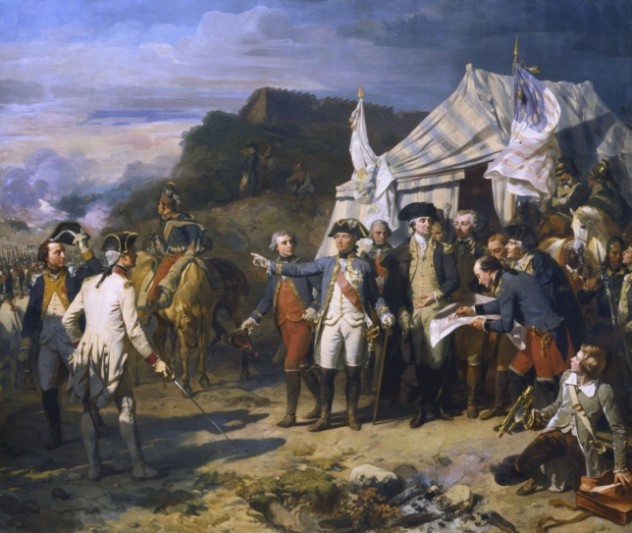
One of the most common tropes of the American Revolution is the war-torn soldier who continues fighting regardless through the awful dead of winter because he cares about his country that much—the soldier who wants nothing more than a chance to lay down his life for his fellow man. However, the truth is that there were very few truly committed volunteer soldiers in the war, so much so that General George Washington actually wanted the first United States government to conscript soldiers. When the American Revolution began, many people were excited and signed up to fight, but they quickly lost their enthusiasm. They were not yet battle-hardened, and the life of a soldier is not an easy or safe one at all. Once the first batch of motivated people had signed up, enlisting new soldiers was a nightmare.
The fledgling government started offering extra money, bounties, and lots of other goodies to anyone who would sign up. They even offered to allow them enlistment terms that were shorter than those mandated by law in order to keep up a strong enough fighting force. While many of these men were probably not Tories loyal to England, they did need a lot more than just the desire for freedom to fight for their homes. When you and your family need to eat, you have to think about more than just the concept of freedom. You have to buy food, and you need shelter. Above all, these men were mostly farmers and weren’t cut out for the life of a man at war.
7 General Hannibal’s Elephant Cavalry
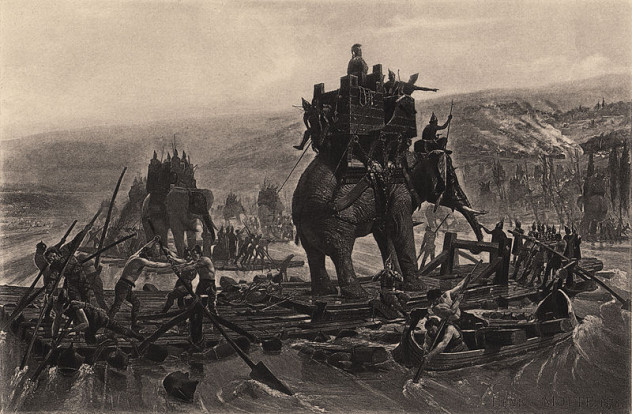
One of the most famous wartime scenes in all of world history is Hannibal crossing the Alps with his army riding on elephants to scare the Romans and give them a series of unforgettable battles. The legends claim that not only did he cross the mountains with a large company of elephants in his army, but that a multitude of them showed up at major battles against the Romans.
According to historians, it is likely all or most of this tale is total fabrication, much of it cooked up by Roman writers at the time who wanted to make Hannibal seem more intimidating so that his defeat would make their generals look more glorious.
Historians have reason to believe most of the elephants originally brought along did not even survive the crossing, leaving Hannibal with only a handful at best—if any survived at all, that is. Some accounts of large numbers of elephants also claim that the animals were spooked at the sound of battle. These accounts also suggest that the war-bred animals with trained riders on their backs went crazy and trampled through Hannibal’s own line during major battles.
As far as many historians are concerned, these stories sound like utter myth, and it’s most likely there was not a single elephant at any of the major battles Hannibal staged against the Roman Empire.
6 Napoleon Would Have Won The Battle Of Waterloo If Only He . . .
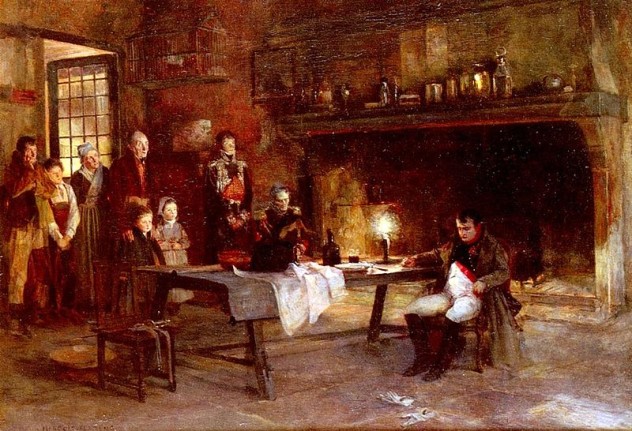
Napoleon Bonaparte was one of of the greatest military strategists and conquerors to ever walk the globe. Many people still laud him for his tactics, and his actions certainly changed the world. Many people know well that Napoleon’s final defeat, the one that was said to finally break him, was the Battle of Waterloo. Most stories claim that if not for losing this battle, Napoleon could have gone on to regain control of everything he had lost and perhaps conquer even more than he had before. According to many historians, on the other hand, such an outcome would have been extremely unlikely in any situation.
Various historians have pointed out different ways that he could have won the Battle of Waterloo. They theorize that if he had led the battle more personally, pressed his advantage in certain key situations, or taken certain risks, he may have been able to wrest victory from the jaws of defeat. Most of these theories hinge on knowing what we know in hindsight, but that isn’t the main reason Napoleon’s success was so unlikely.
The problem was that even if Napoleon had somehow managed a successful victory, it would have still been an absurdly uphill battle for him from that point forward. His support from his own people was waning, and his enemies were consolidating their forces, allying against him and mounting serious resistance that even his genius would have likely been unable to overcome. The Battle of Waterloo may have been his last major defeat, but he was already unlikely to have any chance at a real comeback.
5 The Harshness Of The Treaty Of Versailles Led To World War II
One of the most commonly repeated myths about World War II is that the reason it started in the first place was that the Germans were disaffected by the harshness of the Treaty of Versailles. The claim goes that the deal was so financially tough on Germany that it created a deep well of resentment, allowing Hitler and his Nazi Party to take control of the reins of power and then go on a rampage of destruction. For a while, this was a fairly commonly held belief, but a history professor from Toronto named Dr. Margaret MacMillan has been studying every angle of this theory, and her conclusion is that people are getting the history all wrong.
In fact, Dr. Macmillan’s conclusion is that if the Treaty of Versailles had any effect on World War II, it’s that it was not harsh enough. The treaty hurt the Germans, but it didn’t leave them in a truly defeated state. It left them annoyed. This left Hitler just enough resentment to amass a following and left Germany with enough force left to cause serious trouble. It could easily be argued that the Treaty of Versailles is proof of how compromise can sometimes fail. What began as an attempt not to be too lenient or too harsh resulted in a failed compromise.
It could certainly be argued that Hitler played up the Treaty of Versailles and tried to make it sound terrible in order to sway people to his side, but people also forget the amount of popular support Hitler actually had. Many people forget that Hitler’s Nazi Party never won enough votes to outright get him the highest elected position. Hitler managed to take his seat of power through a lot of backroom deals, subterfuge, and who knows what else behind the scenes. The Nazis were skilled propagandists and would have used the Treaty of Versailles to help achieve their ends, but the idea that Hitler used it to sweep himself to victory in a popular election is a myth.
4 The Tet Offensive Determined The Vietnam War
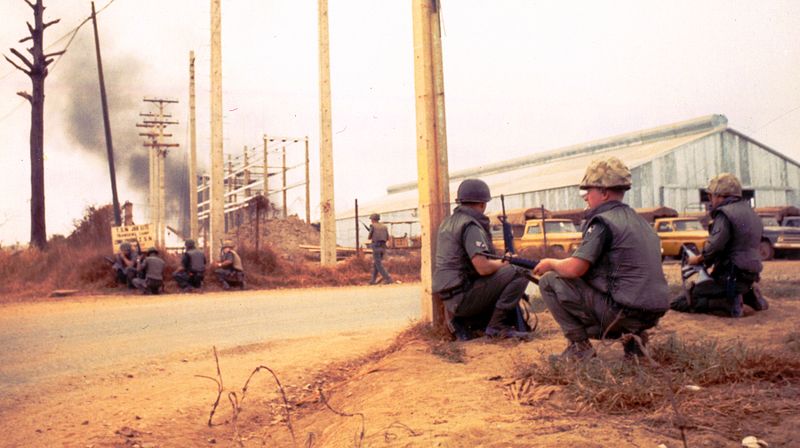
Many people think of the Tet Offensive as the final push that proved the United States couldn’t win the Vietnam War. North Vietnam’s ability to make such a military push after the long, punishing years of fighting was evidence that the war was at an end. Finally, the United States retreated from Vietnam and put an end to the war and the madness of the previous years.
However, while it is true the Tet Offensive was the turning point of the war and likely caused the end of it indirectly, the truth is that the war was far from lost militarily. In fact, if we had continued fighting for much longer after the Tet Offensive, historians now believe we likely would have won soundly.
The Tet Offensive actually caused the North Vietnamese forces to spread themselves dangerously thin—an incredibly risky move. Fortunately, the gamble paid off, but only because the American public was so deeply tired of the war. When the images, scenes, and reports from the Tet Offensive played on news channels across the United States, an already exhausted and demoralized public felt that the war was lost. Before long, the unpopular war was over. The United States simply lost the will to continue.
3 The United States Entered World War II After Pearl Harbor
While it is true that the United States did not officially declare war on the Japanese—and by extension all of the Axis powers—until the bombing of Pearl Harbor, it had already been far from a neutral nation, and US actions essentially forced a Pearl Harbor scenario to play out. The Japanese were reliant on the United States for most of their oil, but they had gone to war against China, an ally of the United States.
President Franklin Delano Roosevelt ordered a freeze of Japanese assets because he was starting to worry about the possibility of war. Japanese traders would have to get licenses to export oil, a move that was meant to hurt them but not cause enough friction for war. Unfortunately, the man President Roosevelt put in charge of licensing decided that no one should be granted any licenses at all. He believed that the Japanese wouldn’t dare attack the United States and wanted to cut off their resources. This led to the attack; the Japanese government knew that with the loss in resources, they had to move fast to gain new fuel sources, and they also had to cripple US naval capabilities.
There were also the many moves to fight the Axis powers behind the scenes, before they had even become the Axis powers formally. Roosevelt worked first to remove the Neutrality Act so that he could sell weapons to Allies, then he worked to pass the Lend-Lease Act, which allowed the US to lend or give arms to countries who would agree to pay for their use at a later date.
There was also a controversial deal worked out by Roosevelt over the heads of Congress to give the British 50 old destroyers in exchange for some naval bases. These actions caused the Axis powers to state in their formal declaration that they would protect each other from attacks by the Americans—clearly our interference was already on their radar. While it was hard to convince the American public to go to war again after its demoralizing participation in World War I, the US was already fighting a shadow war against the Axis powers for years before Pearl Harbor.
2 The Scottish Wore Kilts While Fighting The English
The movie Braveheart has entrenched in our minds the idea of the medieval Scottish fighting the British while wearing colorful tartan kilts. In fact, most people likely believed this before the release of the popular film, as it has long been a popular way to denote Scottish heritage or lineage in cinema and other media—just have the men wear tartan kilts. While historians have known for a while that the tartan kilt thing wasn’t very accurate (along with many other inaccuracies in Braveheart), in recent years they have done more to explain the misconception.
One historian in particular, Fergus Cannan (who claims to be related to Robert the Bruce himself), spent years going through old records and came to the conclusion that the uniform worn by the medieval Scottish warriors was different than imagined. They wore tunics, which might be vaguely reminiscent of kilts but are an entirely different item of clothing. These tunics were not tartan, but dyed bright yellow, often with the use of urine. For better protection, a sleeveless vest made of leather would be worn over the top, and they usually also wore a leather belt around the waist. According to some records, the style was known as the “yellow war shirt” and was still remembered and respected hundreds of years after its popular use.
1 The Bombing Of Hiroshima And Nagasaki Was Unprecedented
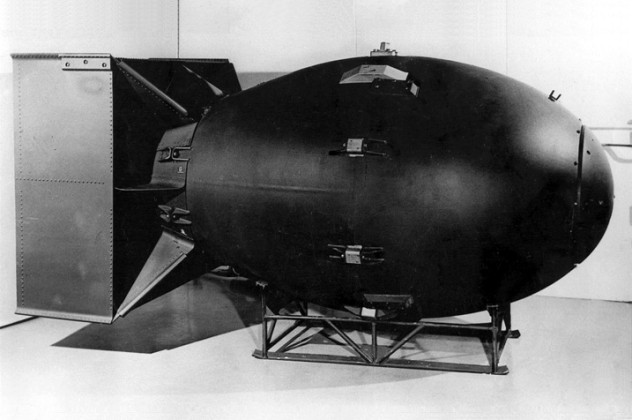
The bombing of the Japanese cities of Hiroshima and Nagasaki near the end of World War II was the first time nuclear bombs were dropped on civilian populations with the intent to annihilate. The question of whether these atomic bombs should have been used at all has been debated in academic and political circles ever since. Some proponents argue that such massive destruction is never justified, no matter what the aim is. Other people argue that if nothing had been done to frighten the Japanese into surrender, they would have fought to the last man; the body count on both sides would have been unthinkable. It’s hard to say what is morally right in this case, but bombing civilians certainly isn’t a choice most people would ever want to have to make.
What isn’t often acknowledged is that both the Allies and the Axis powers were doing it far before the bombs were dropped on Hiroshima and Nagasaki. Now, most people would say that bombing civilians is wrong in most or all cases and that the bombing of Hiroshima and Nagasaki was an unprecedented level of destruction in an extreme case to try to force the Japanese to surrender. However, not only had the United States been bombing civilians before those events, but some of its previous bombing runs were even more destructive than the atomic bombs dropped on Hiroshima and Nagasaki.
Before the United States bombed those two cities, it firebombed Tokyo not once, but twice with B-29 bombers. While it may not have been a single bomb, the destruction was horrendous. Roughly 100,000 people were killed in the first raid and 125,000 more in the second, and about 220 square kilometers (85 mi2) of city was effectively destroyed over the course of both raids. In comparison, the amount of land destroyed was about a quarter of that at Hiroshima, and the number of people killed was roughly 80,000. Nagasaki was a smaller city, so the bombing caused 45,000 casualties and an even smaller amount of destroyed city and land. This is not to say that what happened at Hiroshima and Nagasaki was not horrendous, but it was not the first time a bombing raid had caused such absurd destruction. Whether or not the use of the atomic bomb was warranted, the United States was already destroying scores of people and leveling cities without it.


